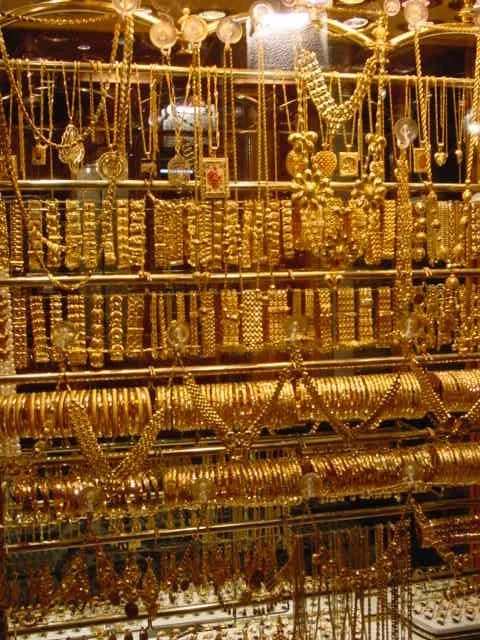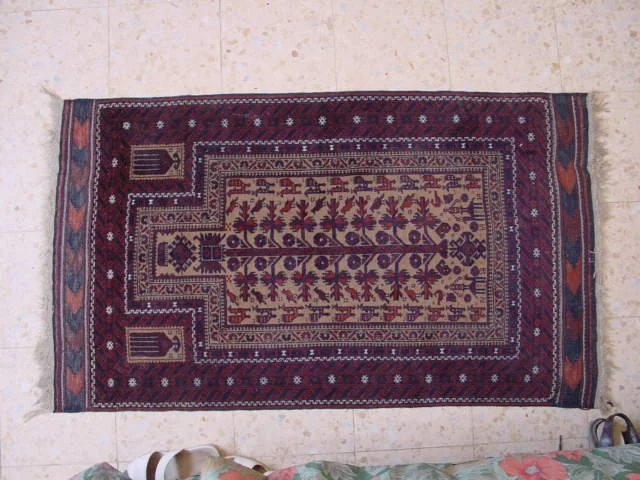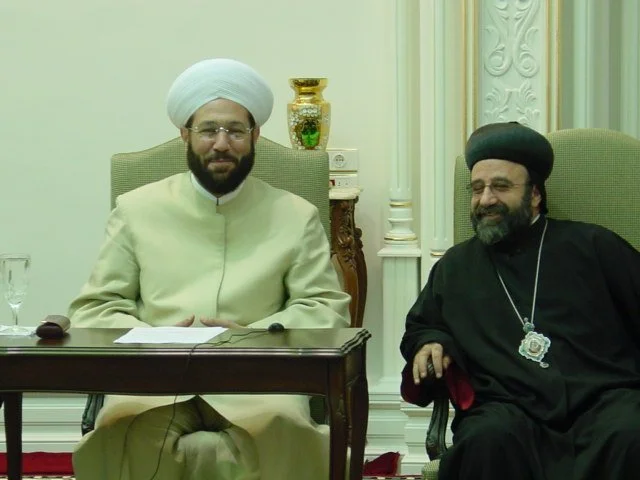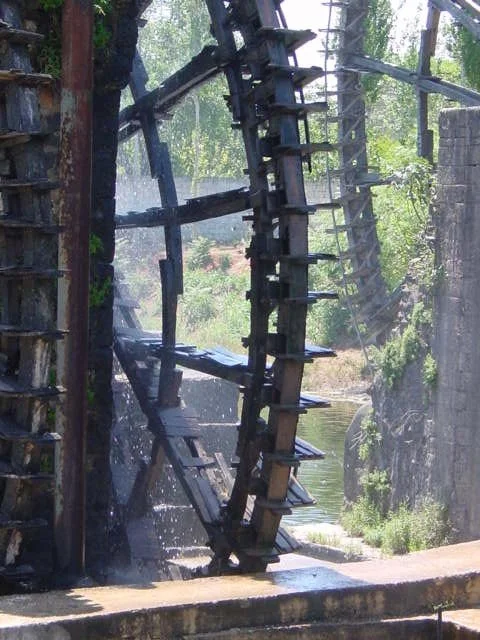May 28, 2002
The gold market.
We bought a rug!
We began our day at the souq (market) for some shopping time. The souq is quite expansive, and the entire maze is covered - a pleasant luxury when the dust is blowing and the sun is pounding down outside. Elizabeth bumped into an American neurologist who first came to Syria 20 years ago on a Fulbright. With his assistance, she ended up buying a rug! This was something she had hoped sometime to do during her time in the Middle East, but which has utterly intimidated her. But a deal was made (largely because of the neurologist's help and Elizabeth's willingness to walk away to catch the bus).
Grand Mufti Hassoun and Metropolitan Ibrahim.
We then headed off to meet with Sheikh Ahmed Hassoun, the Grand Mufti of Aleppo. He and Metropolitan Ibrahim (Syrian Orthodox) together received us in the mosque. Sheikh Hassoun spoke of religious tolerance, noting that as a youth, he prayed in Jerusalem and Bethlehem churches. Jews, he pointed out, have lived in Syria throughout history and they were free to visit their shrines. However, in his estimation, extremists in all religions think they have a monopoly on God. Listening to religious authorities, one always wonders how much is rhetoric and how much is sincere; to us Sheikh Ahmed seemed sincerely to be working hard against radicalism in his community. He stated that the beginning of radicalism in Islam is simultaneous with the establishment of Israel, and that Israel is the only country in the region to expropriate the name of a prophet for its nation (Israel, that is, the name given to Jacob). He ended with a call: "We need to join hands and create heaven on earth."
These abandoned mud homes dot the desert landscape.
The magnificent water wheels.
After the meeting began our long drive to the ruins of Palmyra, stopping along the way for lunch under the shade of more ancient water wheels. Palmyra is an oasis in the middle of the Syrian desert, so the drive brought us into sand, sand, and more sand. Along the road were the most curious structures, houses shaped like bee hives. These ancient homes dotted the landscape like teepees, built out of mud and reinforced ever so often with more mud. We stopped to see some up close. Many of them were abandoned long ago, but bedouins have taken to living in them. This is a common phenomenon in other parts of Syria as well, in the so-called "cities of the dead." Old, vacant towns are left from Byzantine times, and new residents - such as bedouins - come to live in their ruins and use the ancient structures as building materials. Such is the richness of Syria's ancient treasures that this practice is very widespread.
The wondrous Palmyra.
The jewel in the crown of Syria's ruins is Palmyra. We arrived at our hotel, the Zenobia, built right at the center of the ruins (possibly over Queen Zenobia's palace). Because of this, it likely won't be here much longer, so to stay here is a treat. Some went off for camel rides, others to bargain with the barkers who wait at the edge of the hotel parking lot. The rest enjoyed the desert coolness as the moon lit up the scattered columns.






